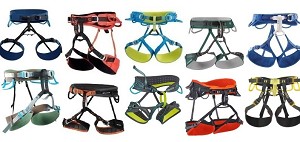
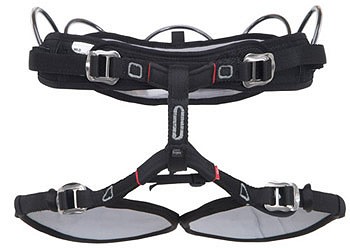
What type of climber are you?
I think one of the important things to think about is what type of climber you are. If you are a keen sport climber you are probably going to be taking a lot of falls over the course of the day and therefore a nice padded harness is going to be ideal. Weight isn't really going to be an issue (some may disagree) and all you are going to really need is space for 10 quickdraws and maybe a few other krabs. Ideally you want it to be comfortable so that you can hang on the rope after tricky clips to rest before trying the next move. Luckily these types of harnesses are pretty easy to find as sport climbing is extremely popular.
If on the other hand you are more of a mountaineer and only want to have a harness for easy scrambling and glacial rescue then something incredibly light and easy to put on will be much better. You will want it to be quite loose fitting around your legs and not constrict you around your hips too much - essentially here you are looking for freedom of movement as the chances are you aren't going to be using it to hold a fall.
So before I can really review this harness its worth thinking for a second that if you do want to buy a new harness what are you actually going to use it for?
Who is this harness aimed at?
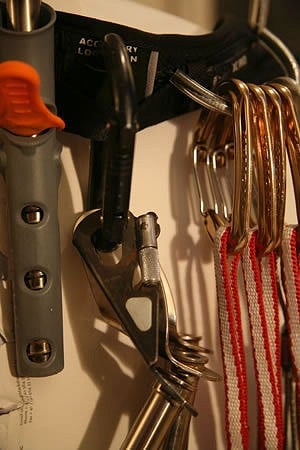
In the end there were two things that were really starting to annoy me with the BOD. The first was that it could sag and move about quite a bit, and the second was that it was incredibly painful to sit in. I found hanging belays to be really uncomfortable, and as a keen photographer I can often be found hanging off in space for hours at a time resulting in bruises occurring from the hip belt. Obviously this is my fault as this harness is not designed for what I was putting it through.
However my next problem after deciding that it was time to upgrade was where the hell do I start? The problem being that the harness is such a basic climbing need that every manufacturer seems to make them and the once humble Whillans style harness is now breaking new barriers in the £100 range thanks to Arcteryx. I spent a while looking around the shops and reading reviews on the internet but gear manufacturers have become so obsessed with trying to market their products with blanket terms to try and appeal to everyone that they are forgetting to target those to whom the product is most suited too. I mean how many times have you read 'at home on sport training grounds as it is at home on the hardest alpine lines' or something of that equivalent? And lets be honest its bollocks. If you are going to produce a harness that is suited for both then I'm not interested- I wanted something that was build just for my alpine adrenaline needs.
The Harness
Thankfully I didn't actually have to make a decision and along came WC with their new top of the line alpine harness, what would I make of it? Well it's definitely what I was looking for- ok admittedly I had no idea what I was looking for but having used it now continuously for 3 months I am very impressed with it. Quite a major upgrade from my BOD I wasn't really sure what to expect. My biggest fear was that I was going to get bombarded with a lot of unnecessary faff. However instead of an overhyped and pricey harness it is actually a simple design with quite a few subtle tweaks that make a huge difference - just the kind of improvements I like!
Weighing in at 480gr it is still light-weight enough for me to rank it as an alpine harness, after all the BOD is 15gr heavier so there is no discernable weight difference there. The downside of keeping harnesses as light as possible is that the manufacturer will have to cut back on the padding as this adds a lot of weight to the harness. However, the first time that I ever used it was taking shots on Nuit Blanche (a WI6 ice fall in Argentiere). Basically I ended up hanging in mid air for well over an hour. I cant say that by the end of it it wasn't starting to hurt a bit because it was but then there aren't many harnesses apart from full body ones that can make a claim like that after such a long time. I was pleasantly surprised at the difference between the Synchro and the BOD. After about 15 mins in the BOD I start to feel it quite badly whilst the Synchro only became a problem after about 45 mins. From a bloke's point of view I was especially happy that my groin had avoided being crushed into a painful mess! Of course progressing on from this, hanging belays did not prove a problem and were actually quite comfortable. So far so good, and that's generally a massive tick on my list as its nice to be able to leave the belay without dead legs and a painful lower back.
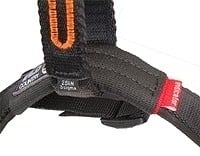
As mentioned earlier you cant beat the ease of use for putting a harness on when it comes to the BOD and the Synchro cant beat it (I'm talking about putting it on with crampons or big boots on). However the Synchro does come with the WC Ziplock adjustment system. Whilst I have always associated the term 'ziplock' with fiddly and annoying freezer bags, the system does actually work rather well. It took me a little while to get used to but I can now very quickly take the harness on and off. I think for those of us stuck in the 'double back buckle' system this is a bit of a change but not necessarily a bad one. The thing I most appreciated about the Ziplock system was that I could tighten or loosen the belt in seconds. In the mountains you should always put your harness on top of your final layer of clothing whatever that may be. However I often find that I swap top layers and each time I would have to re-adjust my harness which basically involved unbuckling it. With the Ziplock it's a 2 second process and even better is that if you were to slip, the harness is still totally secure as opposed to the old buckle system where not having it double backed can be dangerous. Basically once the harness is on, it's always on.
Extra Features
So what's new then? Well it's a tough market to crack and in today's day and age of 'no faff' how do you show that your product is better than the others? Increasingly the maxim of 'less is more' is spearheading designers into simple easy to use equipment. However in the mountain and climbing equipment world we don't actually want less we just want it to be lighter and better. This involves doing a lot of small behind the scenes adjustments to the product which are not very noticeable at first sight and invariably cost more to design and get right that just sticking on an extra (obvious) strap somewhere.
I've already covered the Ziplock system, but the Synchro covers more than that. Something that I've never seen before is the Accessory loops that are part of the hip belt. I cant explain it so if you look at the image it will do a lot better job. What this allows is for you to put a krab through it and use it as the equivalent of a caritool or iceclipper for axes of ice screws, or anything really. There are two on either side of the front buckles so they are the perfect substitutes for when you don't have a 'caritool' to hand or quite frankly as added ones. For winter climbing this has been great and it's a simple feature that I've really taken a shining to.
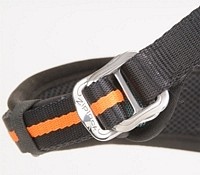
There is also a handy little wear indicator for those who worry about when to replace their harness. Located on a red strip by the belay loop it indicates when it might be best to replace it due to heavy use.
Conclusion
Well I seem to have had a lot to write about this harness. I hope though that I have impressed upon you that you have to decide what type of a climber you are and that this isn't going to be great for everyone. If you are just a sports climber then most of the features that make this harness great for me are going to be lost on you, and vice versa with a sports climbing harness to be honest! To give it a full testing its been on ski tours and descents, mixed winter climbs, ice falls, long snow couloirs, and photo shoots. At the end of the day its made for the more technical side of the mountains and in any mountaineering that involves belays and climbing, as opposed to just snow plodding, this will be my harness of choice. The BOD will not be neglected however but has now been relegated to easier climbs and ski tours that can happily be done with a comfy harness that will not be in much use. At a RRP of £60 this is very much top of the range pricing for a harness. However I'm left thinking how often do I really replace my harness? The average bracket for a harness is around the £40 mark so we aren't talking a huge price increase, and over the next 5+ years of use its going to get it's a small price to pay for the comfort and usability it produces. I think the problem with this 'less is more' approach is that it's often very hard to see the where your extra money is going to and to be honest when I first picked it out of the box I wasn't very convinced that it would impress me. In hindsight for the improvements it has offered 20 quid more is a very small price to pay.
Price: £60
Weight: 480 grams





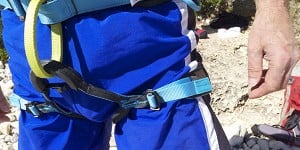

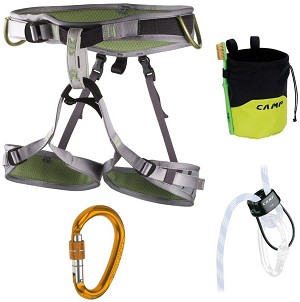
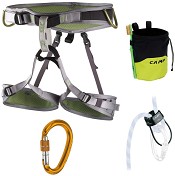
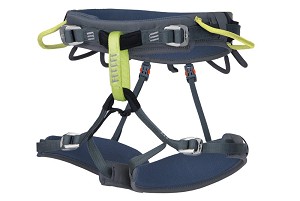
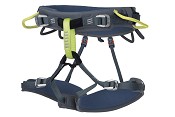
Comments